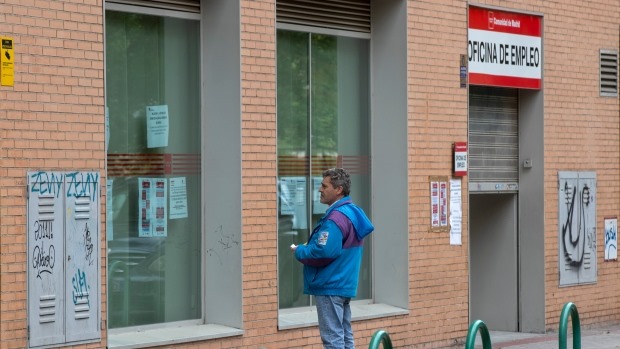FRANKFURT — Unemployment rose for a fifth straight month in Europe in August and is expected to grow further amid concern that extensive government support programs won’t be able to keep many businesses hit by coronavirus restrictions afloat forever.
The jobless rate increased to 8.1% in the 19 countries that use the euro currency, from 8.0% in July, official statistics showed Thursday. The number of people out of work rose by 251,000 during the month to 13.2 million.
While Europe’s unemployment rate is still modest compared with the spike seen in many other countries, economists predict it could hit double digits in the coming months as wage support programs expire. A resurgence in infections in many countries has meanwhile led to new restrictions on businesses and public life may have to be broadened and could lead to more layoffs.
European governments have approved trillions of euros (dollars) to help businesses, setting up or bolstering programs to keep workers on payrolls. In the region’s largest economy, Germany, some 3.7 million people are still on furlough support programs. With no clear end to the pandemic in sight, the government has extended that through the end of 2021. The program pays over 70% of the salaries for workers put on short hours or no hours. The European Central Bank is injecting 1.35 trillion euros ($1.57 trillion) into the economy.

The pandemic is sending unemployment higher around the globe. Outside the 27-country European Union and its 19 members that use the euro, Britain faces a sharp increase in unemployment as the government plans to replace a broad furlough support program at the end of October with a more limited version. Some economists expect the unemployment rate to double to 8% by year-end. A lack of progress on reaching a new trade deal with the EU is only likely to worsen things.
In the U.S., the jobless rate fell sharply in August by 1.8% to 8.4%, after a sharper increase during the spring. The U.S., which has less in the way of labour market support programs, saw unemployment spike as high as 14.7% in May, followed by a steep fall as businesses and states reopened. The number of Americans seeking unemployment benefits declined last week to a still-high 837,000, indicating companies are still cutting jobs despite the tentative recovery that began after states started reopening.
Photo credit: AP Photo/Paul White, File
News source: The Associated Press











